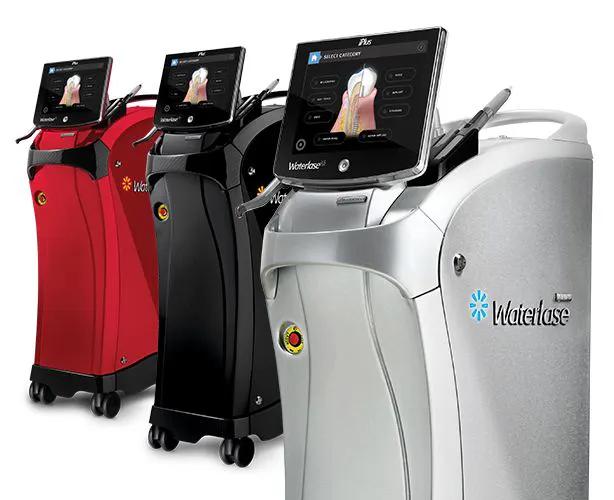How Dental Lasers are Revolutionizing Endodontic Procedures
The use of minimally invasive laser technology can allow clinicians to deliver less painful and more precise laser-assisted irrigation.
How Dental Lasers are Revolutionizing Endodontic Procedures | Image Credit: © BIOLASE

Endodontic procedures have been successfully practiced for a very long time. However, there are elements that are due for innovation. Consider this: When was the last time you made a call on a landline telephone or sent an important letter by mail instead of email? While these older methods still work, there may be better options given modern alternatives.
Treatments such as crown/veneer removal and root canal therapy can be enhanced by embracing new technologies and techniques that can help improve the patient experience while maximizing treatment efficiency. There is now a revolutionizing minimally invasive laser technology that allows for less painful and more precise laser-assisted irrigation in addition to efficient removal of crowns and veneers. As awareness of these newer methods continues to grow, laser technology has the opportunity to become the standard of care for these well-established procedures.
The challenges of traditional irrigation techniques in endodontics and overcoming these obstacles
The challenge for successful endodontic treatment has always been the removal of vital and necrotic remnants of pulp tissue, debris generated during instrumentation, the smear layer (the organic and inorganic layer that is produced on the wall of the root canal during instrumentation), micro-organisms, and micro-toxins from the root canal system.
Even with the use of rotary instrumentation, the nickel-titanium instruments currently available only act on the central body of the root canal, resulting in a reliance on irrigation to clean beyond what may be achieved by these instruments.
Clinicians face the conundrum of how to safely and effectively deliver irrigants to the apical terminus, break the apical vapor lock, and allow for constant exchange of irrigant and thereby continual hydrolysis of pulpal tissue by the sodium hypochlorite (NaOCl) without the risk of apical extrusion and the potential deleterious sequelae that may result from positive pressure needle irrigation delivery.
While there are several ways to deliver NaOCl safely and effectively, few delivery and activation systems provide the ability to debride into the deep lateral anatomy, remove the smear layer, and dislodge biofilm clumps within the anatomy of complex root canal systems.
In the case of crown and veneer removal, the traditional experience is not optimized for patients. Procedures may take upwards of half an hour and are often met with patient discomfort. With laser technology, treatment time may be reduced to as little as 5 minutes. In addition, crowns or veneers can be costly and require maintenance, with a typical lifespan of 10 years. Laser technology offers the potential for their reuse following a removal procedure when indicated.
The Waterlase iPlus from BIOLASE is FDA-cleared for over 80 dental procedures. It is equipped with the proprietary Er, Cr: YSGG 2780 nm wavelength laser to better absorb water and hydroxyapatite for cool and efficient cutting. The YSGG laser, along with 2.5 percent NaOCl or 2 percent chlorohexidine achieves better than 99.9 percent microbial reduction. It solves many challenges associated with endodontic debridement and disinfection. Through laser-assisted irrigation, patients benefit from predictable and efficient disinfection and less post-operative patient discomfort.They offer exceptional fluid dynamics while removing the smear layer and destroying biofilm withdeep lateral cleaning even in the most complex of root canal systems.
Another dental laser of mention is BIOLASE’s EPIC™ X, a soft-tissue laser used in pulpotomies and periodontal procedures. It utilizes diode laser technology to offer an aerosol-free treatment mode – surgery, pain relief, and whitening – across 30 clinical indications.
It’s time to transform crown/veneer removal and root canal therapy
Endodontic treatment often involves creating access openings through crowns or on teeth that have porcelain veneers. Their removal risks damage not only to these restorations (fracture, chipping, and microleakage secondary to caries and debonding) but also to the underlying tooth structure itself.
Research has shown that the Waterlase iPlus is a safe and viable alternative for the use of rotary instruments for crown/veneer removal and helps tooth preservation throughout the removal process. Real-life case studies attest to its precision, specifically targeting cement while minimizing adverse effects on underlying tooth structures.
On average, endodontists and dentists in the United States perform about 15 million root canals each year, according to the Cleveland Clinic. We have entered the dawn of tooth-focused treatment aimed at dentin conservation and shrugged off file-focused treatment, where we sacrifice valuable tooth structure to satisfy our current methodologies. The future of endodontics has never been brighter! With the development of safe and effective protocols for crown/veneer removal and the proper agitation of irrigating solutions, lasers, like the Waterlase iPlus have the potential to remove 100% of the organic tissue and 100% of the microbial contaminants right to the apical terminus. Successful endodontic treatment may be taken to levels never seen before.
By integrating these innovative technologies, the dental industry continues to evolve, providing more efficient and patient-friendly solutions that set new standards for oral healthcare.